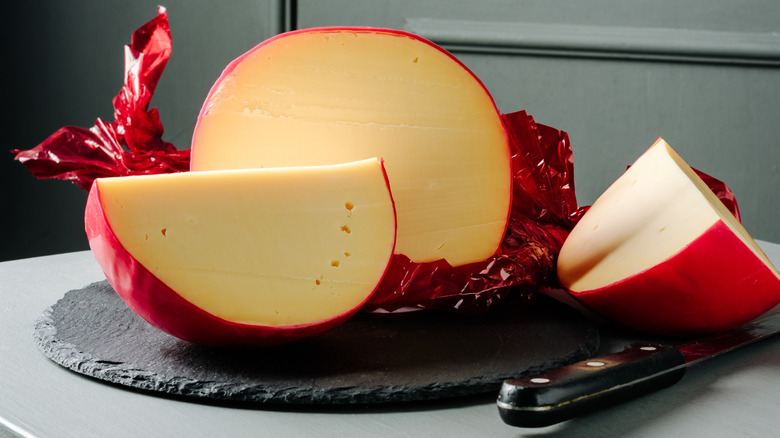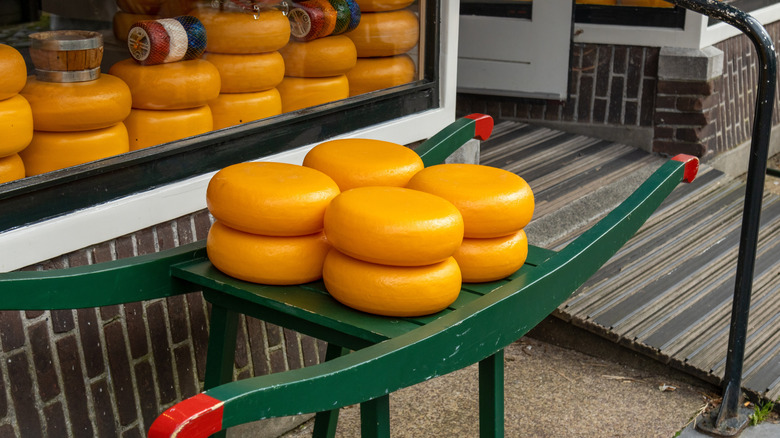The Real Reason Some Cheese Is Wrapped In Wax
When you were a kid, you likely saw some variation of those tiny, bright red cheese wheels from brands like Babybel. The red part, of course, wasn't cheese. It was wax, and you had to unpeel that part before you could actually get to the bright white cheese inside, which was usually a type of Dutch cheese called Edam. As an adult, you'll still likely see larger cheese wrapped up in a thin wax at certain grocery stores. That wax won't always be red, but it's bright enough to make you wonder: Why is wax occasionally used for cheese?
For certain hard or semi-hard cheeses, a wax coating helps the cheese retain moisture so that it doesn't dry out, while preventing mold growth at the same time. This is important because mold is difficult to remove from cheese. On top of that, it's sturdy enough to offer protection while being soft enough that you can easily cut through it with a knife while you're slicing the hunk of cheese open. Wax is more common than you might think in food packaging because of all this. Even the deli paper around your sandwich or underneath your pizza is treated with wax to make it sanitary and non-sticky (sometimes it's called waxed paper).
Working with cheese wax
The process for waxing cheese isn't too complicated, and it's something you could even do yourself for homemade cheeses. To wax cheese, you can melt down wax and then apply it manually to the cheese using a brush or dip the cheese directly into a pot of melted wax — just watch your fingers, because the wax will be hot. Sometimes there's a loose color coding for cheese wax. Red is for hard cheeses like Edam, black is for aged cheese, green is for herb-infused cheese, and so forth. But it's not a consistent system, so don't worry too much.
What should you do with that cheese wax once you've eaten the cheese? It'd be wasteful to just throw it out as it's common for cheese wax to include paraffin, which comes from oil-based petroleum products. That means it's not biodegradable and therefore not compostable. Instead, cheese wax can be reused for homemade candles or to make fancy wax seals on invitations and letters. Even better, you can use it for covering up your own homemade cheeses, so long as you're careful to keep everything sanitary when you make the transfer. As an aside, there are more biodegradable alternatives like bees wax out there, so check the materials on the label if you'd rather purchase eco-friendly wrapped cheeses.

